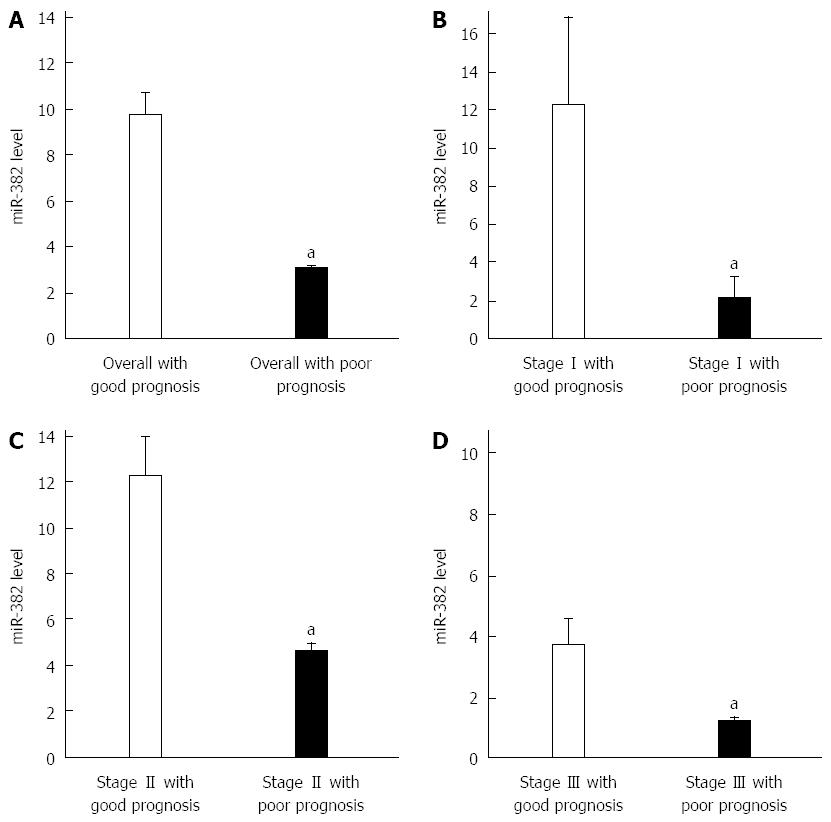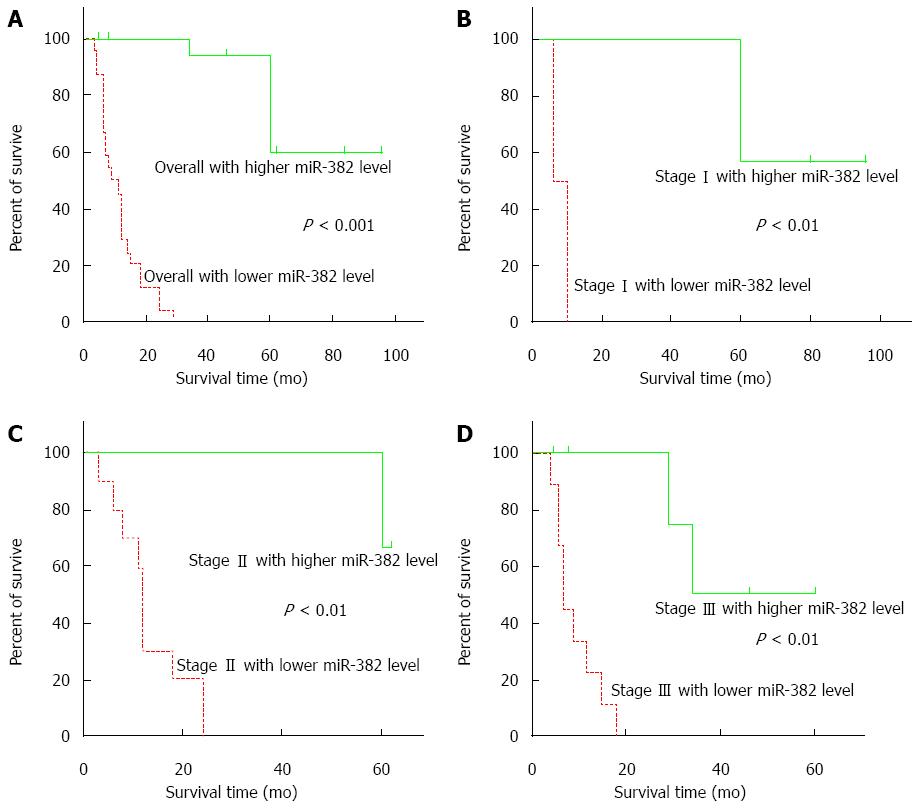Copyright
©The Author(s) 2015.
World J Gastroenterol. Jun 14, 2015; 21(22): 6884-6891
Published online Jun 14, 2015. doi: 10.3748/wjg.v21.i22.6884
Published online Jun 14, 2015. doi: 10.3748/wjg.v21.i22.6884
Figure 1 Amplification plot with ΔCt values of miR-382 in all patients.
Figure 2 miR-382 expression levels were associated with outcomes of esophageal squamous cell carcinoma patients.
A: The esophageal squamous cell carcinoma (ESCC) patients with good outcome generally exhibited higher miR-382 expression than those with poor outcome (aP < 0.05, good outcome vs poor outcome); B: Stage I ESCC patients with good outcome exhibited higher levels of miR-382 than those with poor prognosis (aP < 0.05, good outcome vs poor outcome); C: Stage II ESCC with good outcome exhibited higher levels of miR-382 than those with poor outcome (aP < 0.05, good outcome vs poor outcome); D: Stage III ESCC with good outcome exhibited higher levels of miR-382 than those with poor outcome (aP < 0.05, good outcome vs poor outcome).
Figure 3 miR-382 expression levels were reverse-correlated with esophageal squamous cell carcinoma patient survival times.
A: The esophageal squamous cell carcinoma (ESCC) with higher miR-382 expression generally exhibited longer survival times, compared to those with lower expression levels (P < 0.001, higher vs lower miR-382 level); B: Stage I ESCC patients with higher levels of miR-382 exhibited longer survival times, compared to those with lower expression levels (P < 0.01, higher vs lower miR-382 level); C: Stage II ESCC patients with higher levels of miR-382 exhibited longer survival times, compared to those with lower expression levels (P < 0.01, higher vs lower miR-382 level); D: Stage III ESCC patients with higher levels of miR-382 exhibited longer survival times, compared to those with lower expression levels (P < 0.01, higher vs lower miR-382 level).
- Citation: Qi B, Lu JG, Yao WJ, Chang TM, Qin XG, Ji YH, Wang TY, Liu SG, Li HC, Liu YZ, Zhao BS. Downregulation of microRNA-382 is associated with poor outcome of esophageal squamous cell carcinoma. World J Gastroenterol 2015; 21(22): 6884-6891
- URL: https://www.wjgnet.com/1007-9327/full/v21/i22/6884.htm
- DOI: https://dx.doi.org/10.3748/wjg.v21.i22.6884











